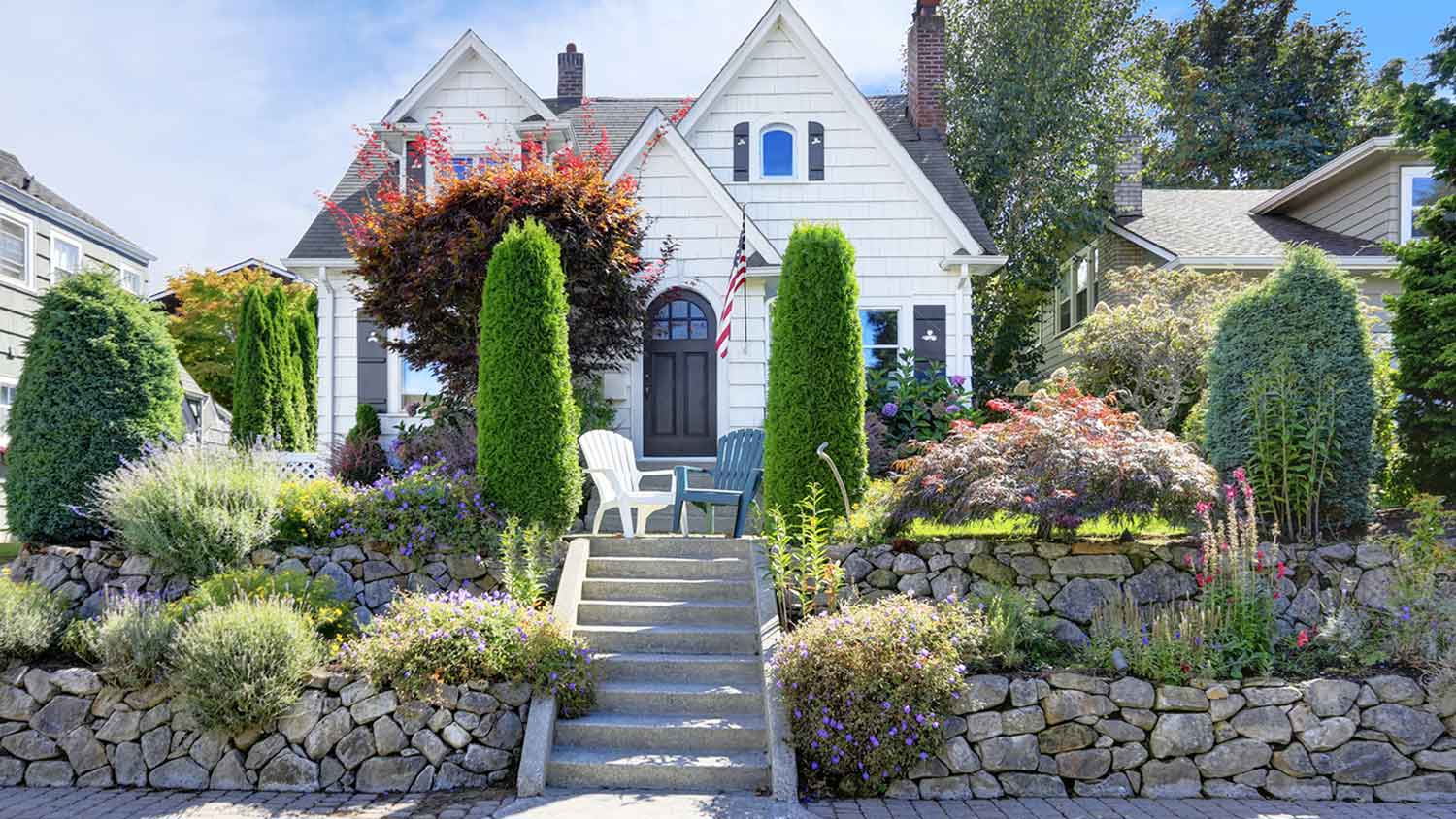
Retaining wall repair cost can vary widely based on the age and condition of the wall being restored. Learn why finding the right pro is important for getting the job done.
See how each paver stacks up


Brick pavers cost more but offer a classic look.
Concrete pavers are economical and come in hundreds of shapes, sizes, and styles.
For the biggest ROI, consider installing brick pavers.
Brick pavers have the longest lifespan and lowest maintenance requirements.
From building a patio, garden, or walkway, you have a lot of choices when it comes to the material you use. Two of the most popular options that stand out for both longevity and versatility are concrete and brick pavers. From brick patios to concrete walkways, let’s compare the strengths and weaknesses of each type to discover the best pavers for your outdoor space.
Concrete and brick pavers may seem similar at a quick glance, but they have unique differences that could be the determining factor in which one you choose for your project.
Manufacturers make concrete pavers using concrete and aggregate materials, and baked clay for brick pavers. Both materials are pre-cut, giving them a uniform appearance. Concrete pavers are the most economical but require a little more TLC to maintain, while brick pavers are resistant to stains and fading but have less customization.
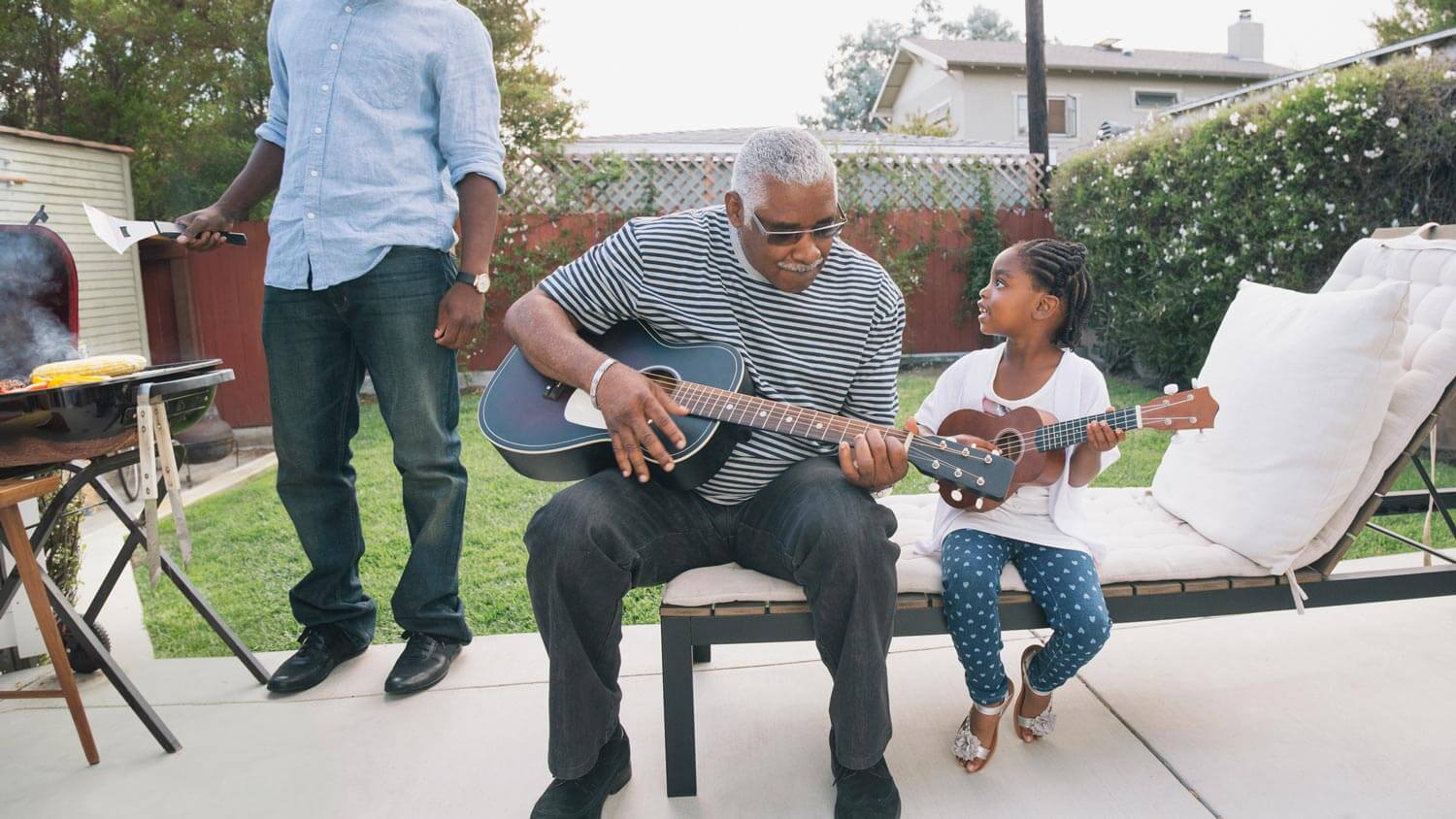
Concrete pavers are made of a mix of concrete and mineral aggregate, molded into different interlocking shapes. Their modern look is well-suited to homes with an urban or industrial style, and they’re ideal for homeowners who want to design a strong surface without spending too much money. Expect to pay $8 to $15 per square foot to install concrete pavers.
Available in a wide variety of shapes, sizes, and colors
Easy to cut and install in a variety of patterns
Easily replaced if individual pavers are damaged
Most economical option
Gaps between pavers create good drainage
Extremely strong and durable
Can be sealed to protect from spills, leaks, and stains.
Must be sealed regularly to retain color
Susceptible to cracking from erosion
Costs more than poured concrete
| Pros | Cons |
|---|---|
| Many shape, size, and color options | Requires regular sealing |
| Economical | Can crack from erosion |
| Very strong and durable | More costly than poured concrete |
Best for:
Pool decks and any areas where you need an anti-slip walking surface
Areas with heavy foot traffic, including driveways
Homes with an industrial vibe
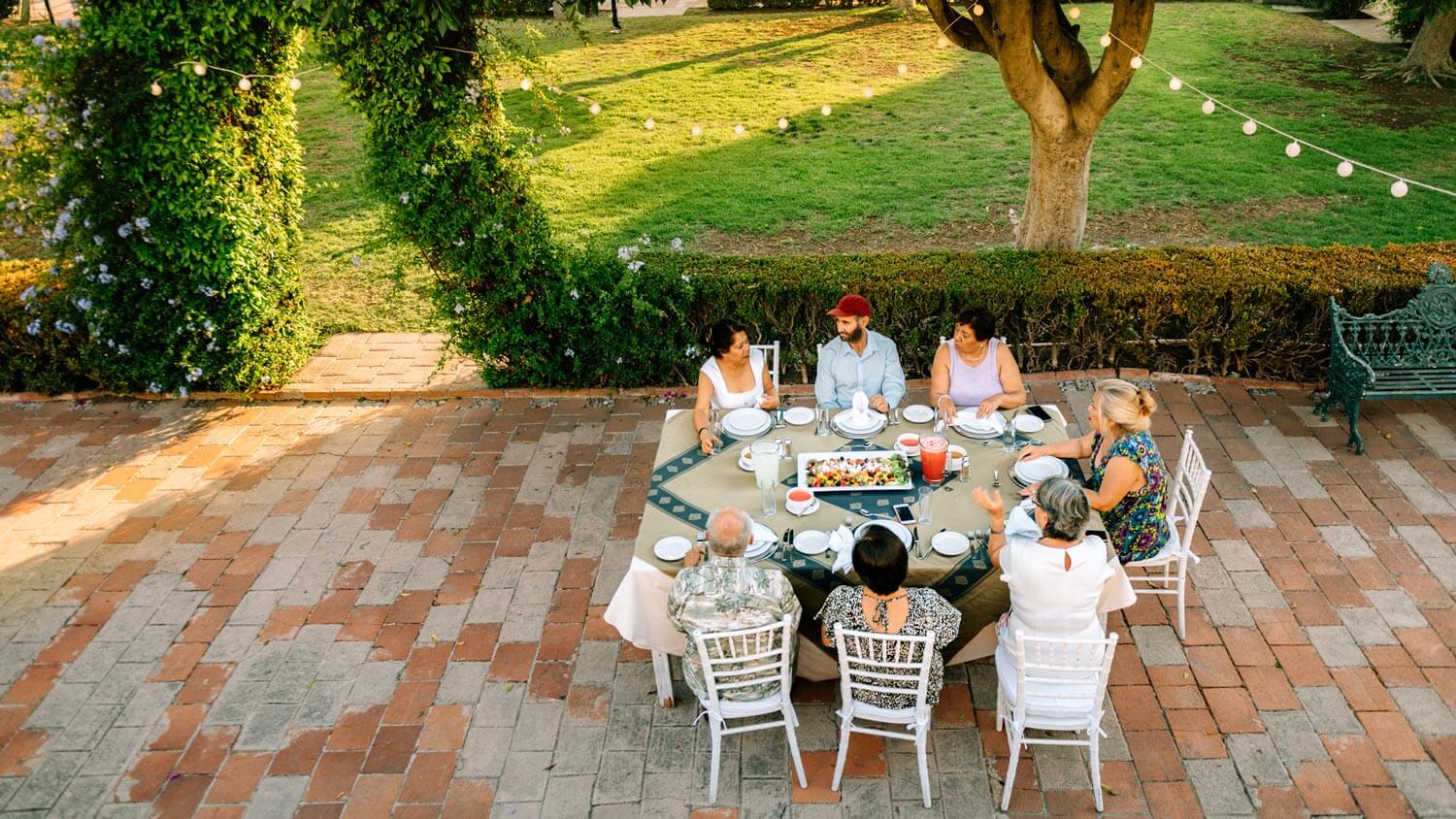
Bricks, blocks of molded, baked clay with a classic look, have been used in construction for centuries. In landscaping, bricks can be laid with small gaps between them to form a permeable, non-slip surface with good drainage. They’re fragile in the face of weather and wear, but extremely strong when it comes to weight-bearing. Brick paver installation costs $10 to $20 per square foot.
Recyclable material that breaks down naturally
Resistant to stains and fading
Can bear extremely heavy weight loads
Adjusts naturally when the base material moves
Creates a non-slip surface
Increases property value
Has a relatively short lifespan of only 25 years
Tends to flake and disintegrate with weather and wear
Requires sealing
Not as many design options as other paver types
Installation is labor-intensive
| Pros | Cons |
|---|---|
| Stain and fade-resistant | Only lasts 25 years |
| Increases property value | Can flake and disintegrate over time |
| Non-slip surface | Limited design choices |
Best for:
Homes with a classic look
Patios and walkways
Those looking for the lowest-maintenance option
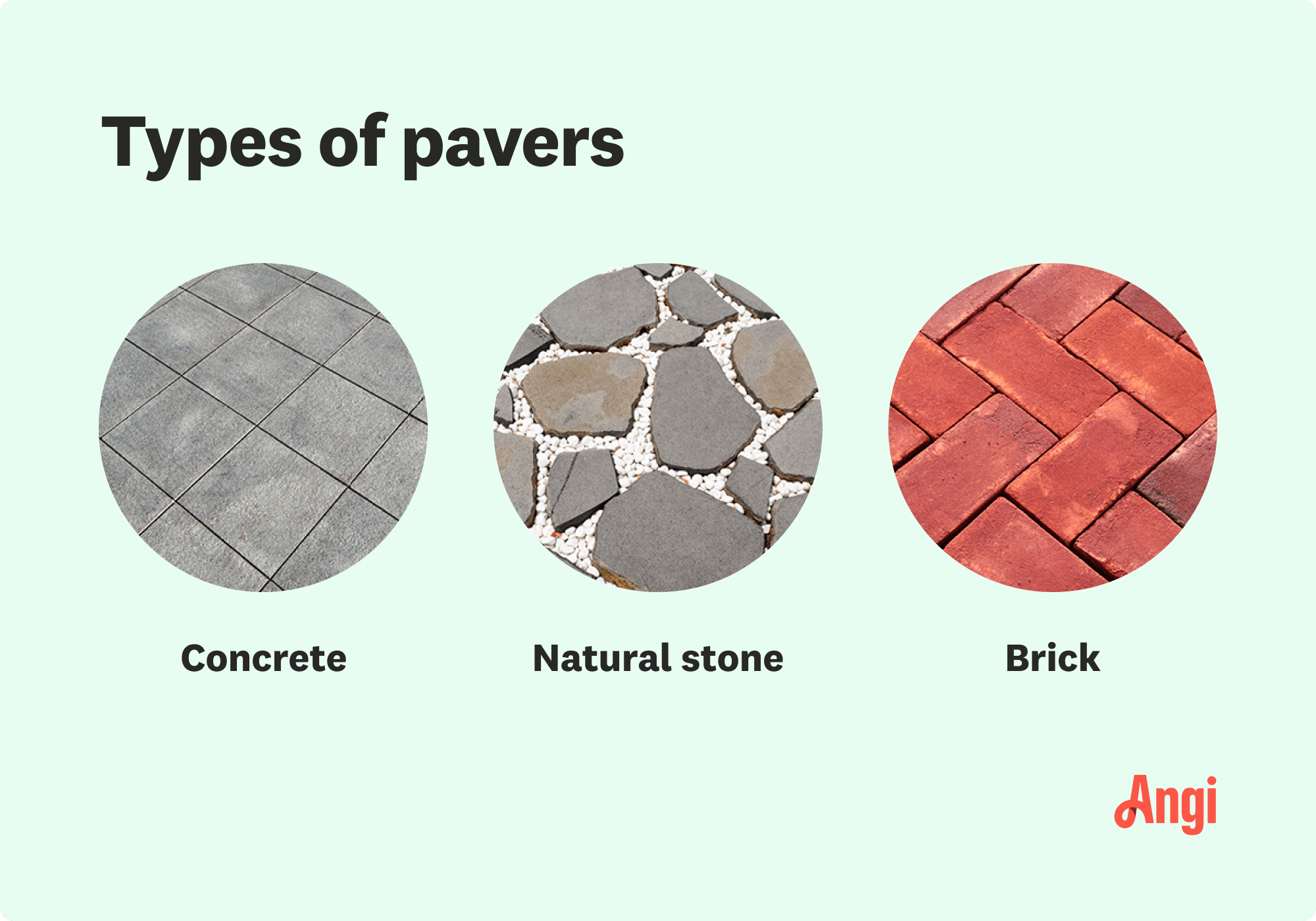
Concrete and brick are common types of pavers in outdoor spaces. Both have their place in the hardscaping world, but their unique characteristics could help you decide which one is the best for your landscaping project. Let’s break down some of the features that set them apart.
The question of which paver has the best appearance largely comes down to personal preference. Both concrete and brick pavers form interlocking systems that can be arranged in various patterns, with a variety of different shapes and colors available for customization. You can also choose a layout with gaps in between or gravel that allows water to drain through.
Concrete offers a modern touch that suits homeowners going for an urban or industrial style. Bricks, on the other hand, provide a warm, more classic, and elegant look.
Concrete and brick pavers offer many options for color and texture. However, brick tends to be the least versatile, as it is manufactured in fewer styles. Concrete pavers can be dyed to look like bricks in a greater range of sizes, shapes, and patterns, giving you more possibilities. Concrete can be used to create virtually any design you can imagine.
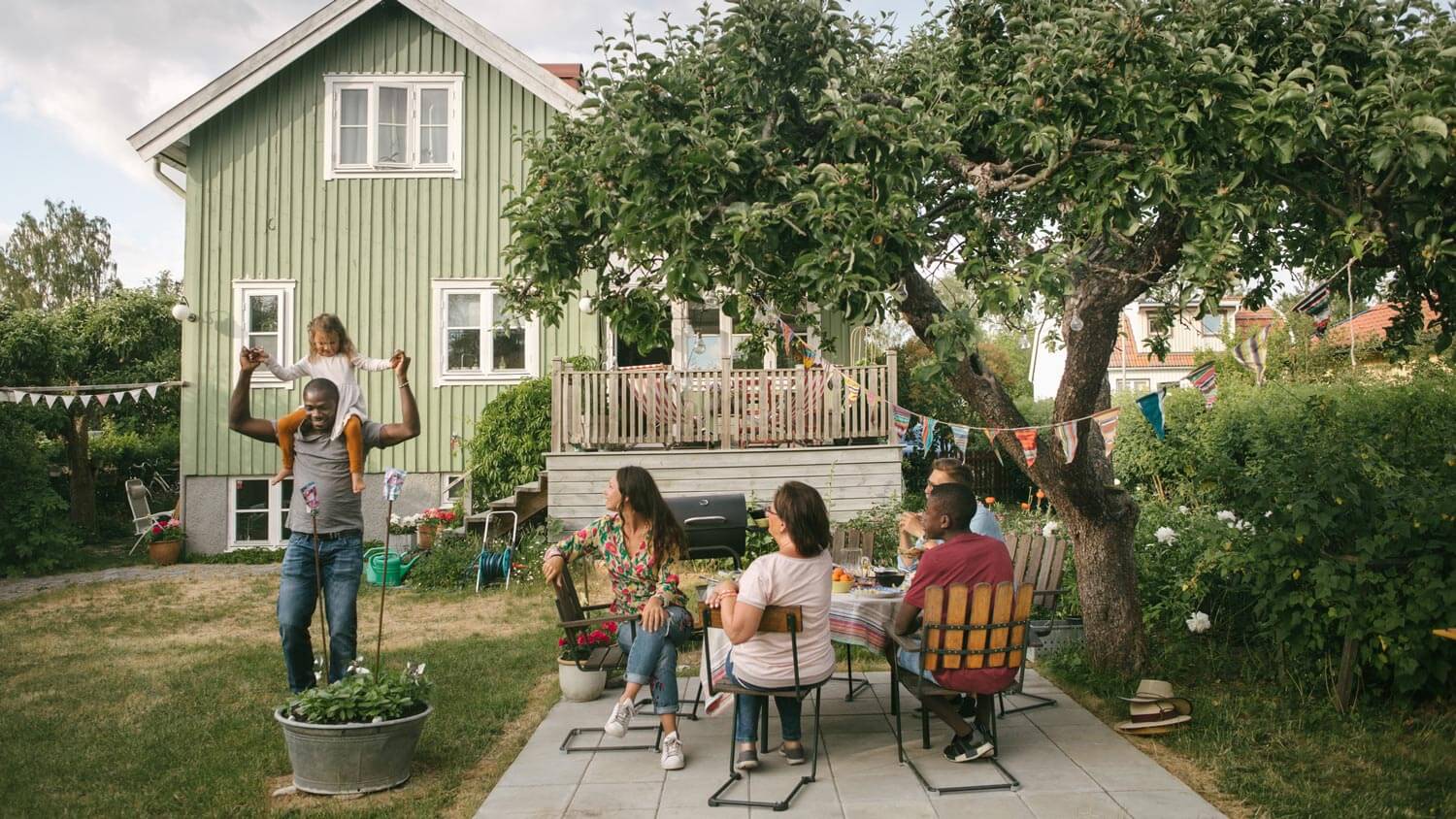
Concrete pavers are the lowest-cost option because of their availability, making them the most economical option for installation. Expect to pay $8 to $15 per square foot when installing concrete pavers. Brick paver installation costs run a little higher at $10 to $20 per square foot since brick comes from clay, a resource that requires more labor to produce.
Concrete and brick pavers have interlocking designs, making them relatively easy to install after you level and grade your yard. Concrete pavers may be easier to install than brick due to their more precise shaping and the ease with which they can be cut. However, learning how to build a brick patio is not the most challenging project, aside from physical labor.
Both types of pavers are easy to repair. When an individual paver is damaged in some way, whether from a break, crack, or stain, you can call a local hardscape contractor or repair it yourself by simply removing and replacing it. The modular, interlocking arrangement of brick or concrete pavers makes it so that you don’t have to replace an entire walkway when one part breaks.
At the same time, patio repair costs for each can vary. Brick pavers tend to have higher starting repair costs at $11 to $14 per square foot, while concrete pavers have lower starting repair costs, but can cost more overall at $5 to $20 per square foot.
No matter which you choose, pavers make for a low-maintenance surface that requires minimal routine cleaning. With that said, concrete pavers need to be sealed and then resealed every three to five years to protect them from the elements and help them retain their color. Brick pavers, however, will last for generations in their natural state, giving them the edge over concrete.
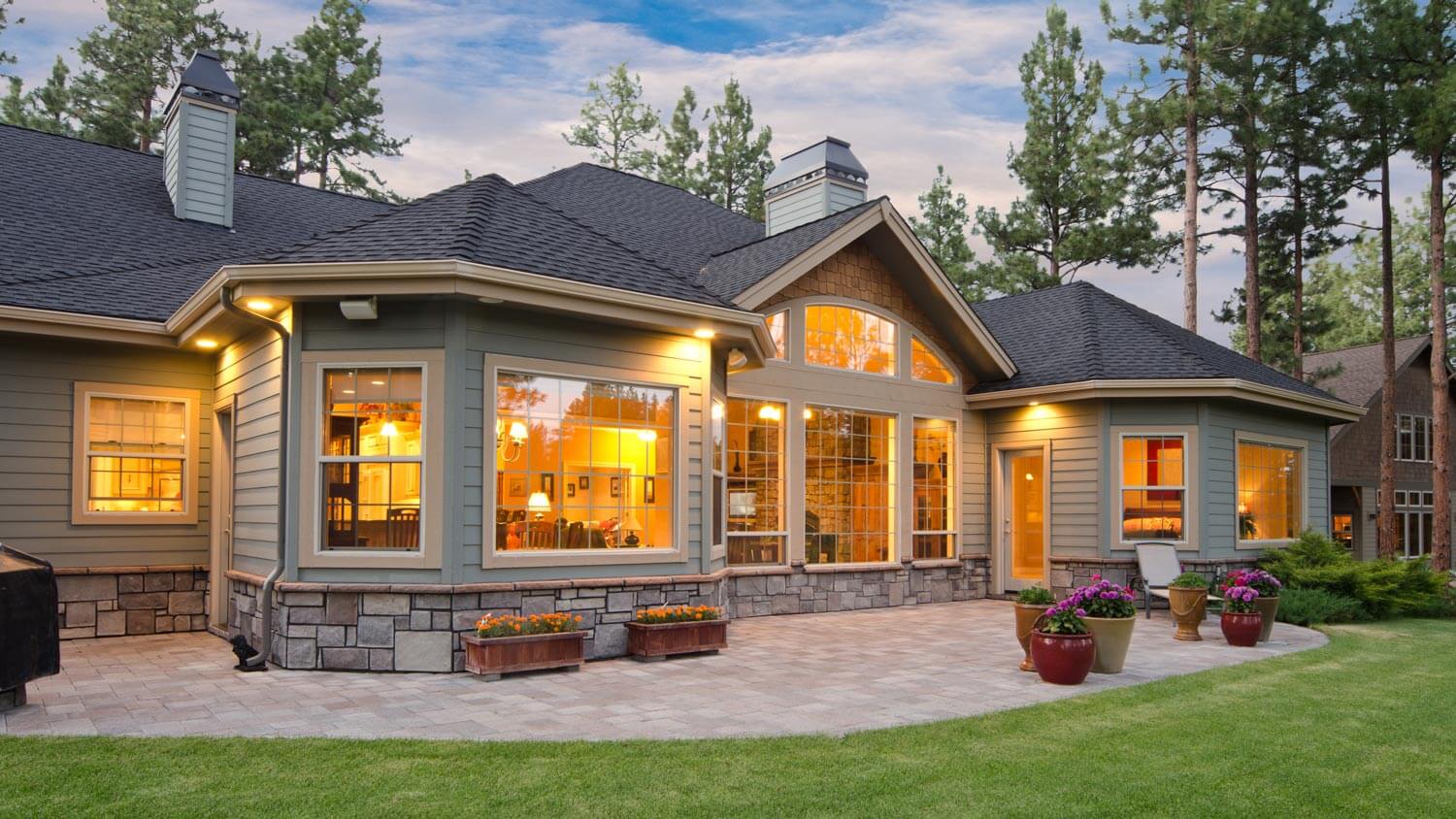
Concrete pavers last an average of 25 to 50 years, although in some cases, they can last even longer. Brick pavers last between 25 and 100 years, depending on their quality. Maintenance, climate, foot traffic, and the professionalism of the installation can make or break your pavers. Stay on top of routine maintenance to prevent either material from flaking and disintegrating before its time.
Brick is an eco-friendly material since it’s made solely from natural materials. It’s recyclable and reusable and breaks down naturally over time, returning to the earth as clay particles. Although concrete pavers are not harmful to the environment, they are not notable for being eco-friendly.
Brick pavers have a higher ROI than concrete thanks to their classic look and higher material cost. You’ll generally increase the value of your home more if you choose to install stamped concrete pavers, which boosts curb appeal better than plain concrete.
From average costs to expert advice, get all the answers you need to get your job done.

Retaining wall repair cost can vary widely based on the age and condition of the wall being restored. Learn why finding the right pro is important for getting the job done.

The cost of stone steps can vary considerably depending on the material you choose and how much labor is required. This guide shows you the cost of popular stone steps and all the extra fees you need to consider when tackling this project.

Pea gravel is a good-looking, versatile landscaping stone that's a favorite of the pros. Read about how much pea gravel costs for both installation and the stone itself.

Learn how to fix your paver patio drainage problem by determining the source of the water that is flooding your pavers and causing sinking, cracking, and other issues.

Pavers can turn an ordinary driveway, walkway, or patio into a thing of art—but how do you protect your investment? Find out if pavers need to be sealed and learn pros and cons.

Create a beautiful, long-lasting path by learning how to lay stepping stones using our guide and a bit of sweat equity and muscle power.